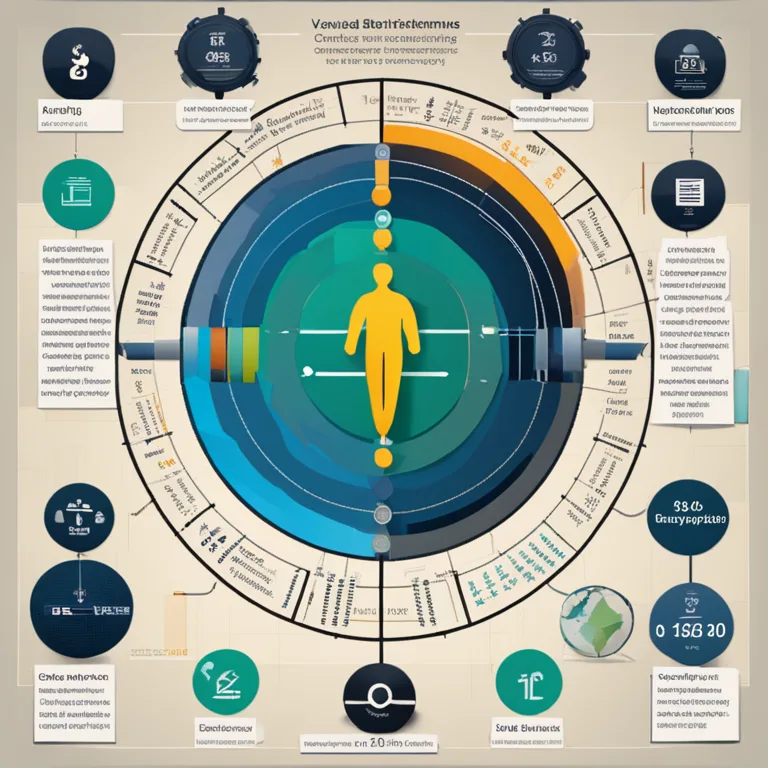
The Rhythms Within: Biorhythms & Psychological Well-being
Dive into the intricate relationship between biorhythms and mental health, and discover how syncing life with natural cycles can lead to improved psychological well-being.
article by Adrian Wallace
Introduction to Biorhythms
Biorhythms are considered as the natural cycles that govern the human body. The concept posits that our lives are influenced by rhythmic biological cycles that can affect our physical, emotional, and intellectual states. Dating back to the 19th century, the theory of biorhythms has since evolved, especially with the advancements in chronobiology. Integrating biorhythm awareness into one's lifestyle is seen by some as a way to optimize personal well-being and performance. It's a holistic lens through which we can potentially harmonize with the ebb and flow of our internal tides.

The Triadic Cycles
Broadly, three primary biorhythms are considered: the Physical (23-day cycle), the Emotional (28-day cycle), and the Intellectual (33-day cycle). These factors intertwine to dictate one's overall disposition on any given day. Advocates of biorhythms claim that by tracking these cycles, individuals can anticipate and more effectively plan for varying states of well-being. For example, a person might aim to schedule demanding tasks when their physical and intellectual cycles are at a high point, or avoid emotionally taxing situations during a low phase of their emotional rhythm.

Biorhythms and Psychological Health
The psychological aspect of biorhythms is deeply intriguing. Proponents argue that understanding one's emotional and intellectual cycles could provide insights into issues such as mood disorders or mental fatigue. It's suggested that a mismatch between one's lifestyle and their natural biorhythms could lead to stress, burnout, or depression. Conversely, aligning day-to-day activities and rest periods with these inherent cycles may contribute to a more balanced mental state and even improved cognitive functioning.

Skepticism and Science
Despite its popularity, the scientific community remains skeptical about biorhythms. Critics argue the lack of empirical evidence and randomized controlled trials that conclusively support the theory. However, the realm of chronobiology – the study of biological rhythms – does acknowledge the impact of circadian rhythms on health, albeit as a more comprehensive and complex system. This has led to contemporary discussions considering whether the concept of biorhythms could be an oversimplified take on a broader, scientifically validated phenomenon.

Tools for Tracking Biorhythms
With growing interest in personal health metrics, tools for tracking biorhythms have become more sophisticated. From mobile apps to wearables, the technology exists for individuals to monitor their biological patterns closely. These tools not only track sleep and activity but can also analyze emotional patterns and cognitive trends over time. While technology cannot change the rhythms themselves, it can empower users with data to make informed decisions about their lifestyle choices.
Incorporating Biorhythms into Daily Life
For those interested in using biorhythms for psychological well-being, the integration into daily life can become a personalized journey. One method is adopting mindful practices that encourage tuning into one's own cycle patterns, like journaling or meditation. Lifestyle changes, such as adjusting sleep schedules, exercise routines, and work engagements can also be guided by personal biorhythmic patterns. This self-awareness can potentially lead to more attuned decision-making, enhanced resilience, and a greater sense of control over one's emotional and intellectual vitality.
Published: 1/4/2024
Modified: 1/4/2024
More predictions
Come back here soon to learn more about yourself and your future


The Impact of Biorhythm Compatibility
Discover the impact of biorhythm cycles on relationship dynamics and compatibility in our insightful article.


The Significance of Biorhythm Compatibility
An in-depth analysis of biorhythm compatibility and its impacts on personal relationships. Discover how syncing your biological cycles can enhance connections.


The Practical Uses of Biorhythms in Daily Life
Discover the practical applications of biorhythms across various aspects of daily living, from personal health to decision-making.